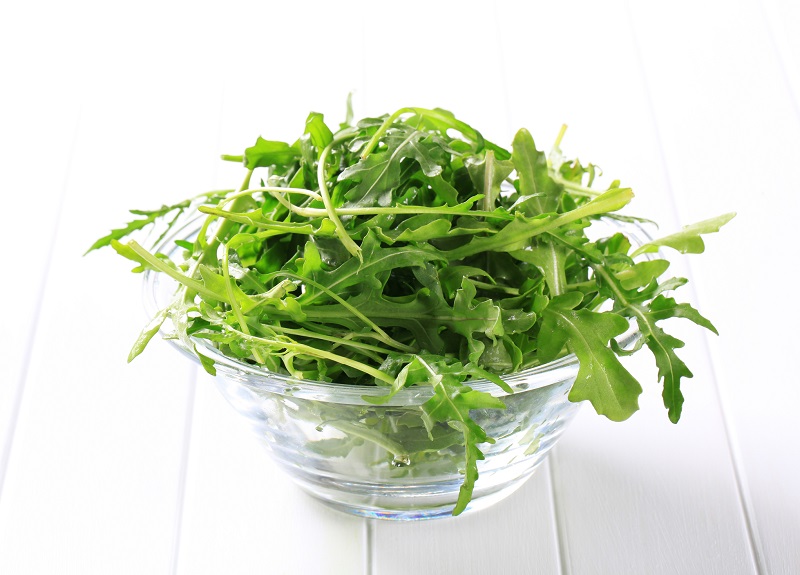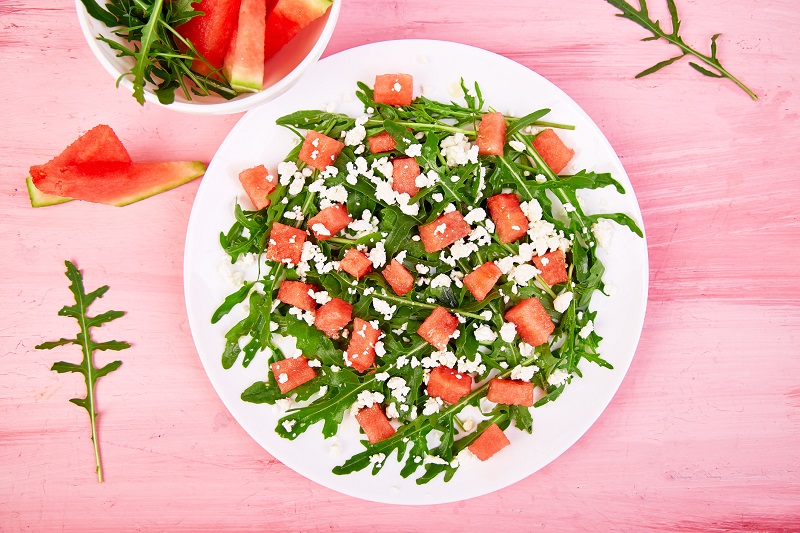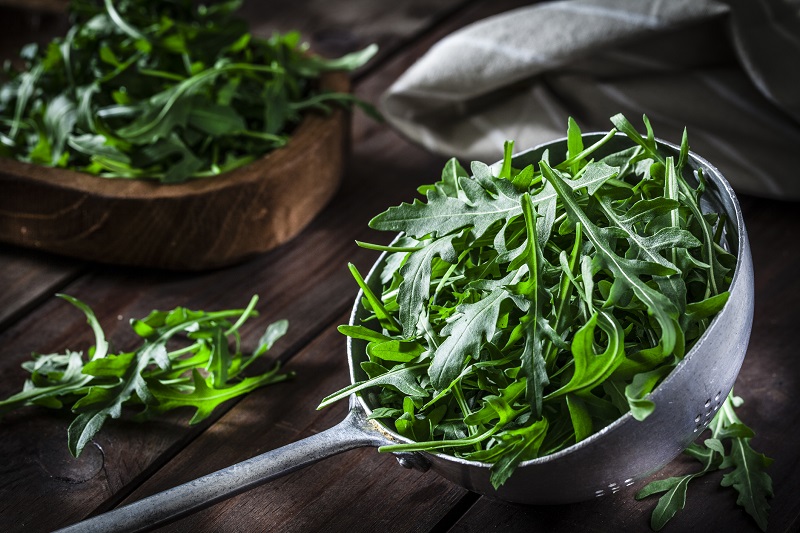Superfood Saturday: All About Arugula
Leafy greens of all kinds are like the league of superheroes for your healthy diet. They pack a punch of powerful nutrients and always protect you from excess calories and fats. Among those champions of eating well, arugula might be considered the Master of Zing for its zesty flavor that can rescue a salad or wrap from the grip of dull blandness. Arugula (say it, “ah-RUE-gah-lah”) has a lot in common with other leafy greens, but it comes with its own unique powers, too, that make it a superfood you can rely on to lift up your everyday meals to the next level. So not only is this superfood filled with flavor, the benefits of arugula make this green powerhouse a must-have.
Read all about the many benefits of arugula :
Nutrition Highlights

Like all leafy greens, arugula is a nutrient-dense food, meaning it is high in nutrients and low in calories and fats. According to the United States Department of Agriculture (USDA), a single cup of raw arugula has just five calories and almost no fats. It is a non-starchy vegetable, so you can eat as much of it as you want while staying on track with your Nutrisystem weight loss plan.
In each cup of arugula you get 475 IU of vitamin A, a nutrient that is essential for your immune system, heart and vision. Antioxidants such as vitamin A help remove damaged cells from your body, helping to protect you from cancer and other diseases. According to Healthline, a cup of arugula also provides you with 74 milligrams of potassium, the nutrient that supports healthy blood pressure, and 32 milligrams of calcium, which makes it a good vegetable source of the mineral that plays a key role in regulating your metabolism as well as helping to build and maintain healthy bones. Arugula also nourishes you with small but valuable amounts of iron, magnesium and folate.
Health Powers

The ancient Romans believed that arugula was a potent aphrodisiac. No modern research has confirmed this power for arugula, but there is still plenty to love about it. Arugula looks similar to and is used much like lettuce, but it actually is a cruciferous vegetable, so nutritionally it is more akin to broccoli, cabbage, and Brussels sprouts. Like them, arugula contains compounds called “glucosinolates,” which give it the peppery flavor. A wide range of studies have linked regularly eating glucosinolates to reduced risk of lung, breast, prostate, stomach, colon and other kinds of cancer, according to the National Cancer Institute.
Arugula also is loaded with flavonoids, other compounds found in minute amounts in fresh green vegetables. “The growing body of scientific evidence indicates that flavonoids play a beneficial role in disease prevention,” says a report in the medical journal Plant Foods for Human Nutrition. Eating arugula and other foods high in flavonoids reduce your risk of heart disease, autoimmune conditions, cancer, and more.
Even with all of the nutrients in arugula, it is still composed of 90 percent water. That makes it a good food for keeping you hydrated and even cool on the hot days of summer.
Buyer’s Guide

Another one of the many benefits of arugula? It’s available just about year-round in most grocery stores, but you can get it at its freshest at farmer’s markets and from other local sources in spring and fall. If you really love it, you can grow your own arugula in a garden bed or pot. It sprouts easily from seed and you can begin harvesting a few leaves within a month or so planting it.
When shopping for arugula, look for firm, dark green leaves and avoid any bunches with leaves that are yellow or have dried tips. When you get arugula home, keep it dry and wash only as much as you can use—if it stays wet, arugula will rot quickly. Store it in the lowest humidity section of your refrigerator and place a dry paper towel in the plastic bag to absorb moisture.
Fresh Ideas

Fresh arugula’s peppery taste perks up bowls of fresh vegetables and fruit, such as our Arugula Pomegranate Salad > and Arugula Beet Salad with Orange Slices > Layer a few arugula leaves onto a sandwich or wrap to give it a jolt of zesty flavor. If you like smoothies with a little kick, toss in a handful of arugula leaves along with sweet berries for a nutrient-packed drink that can help fuel your day.
Do you love spicy Italian food? Try arugula instead of some or all of the parsley in homemade pesto. Or, use arugula for extra flavor on our Thick Crust Pizza (this video shows you how >).
Arugula loses its shape and texture when cooked, but you can add it to omelets, soups and stews and still enjoy its flavor and superfood nutritional powers.


